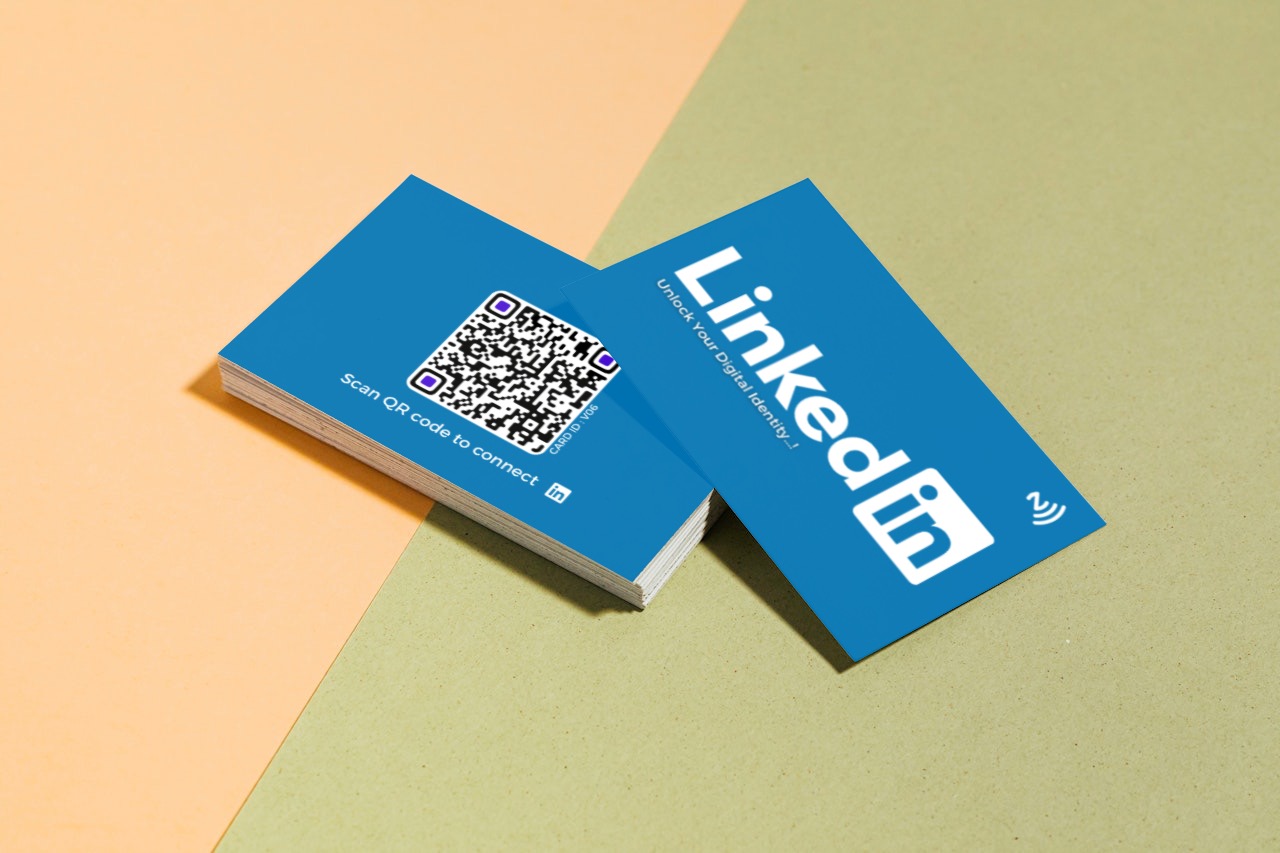–
When designing an NFC (Near Field Communication) business card that is unique, modern, and attractive, you need to consider several key specifications that blend both technology and aesthetics. Here’s a detailed breakdown:
1. Card Material and Build
- Material Options:
- Metal: High-grade aluminum or stainless steel for a sleek, premium feel.
- Plastic: Durable, high-quality plastic (e.g., PVC, polycarbonate) for flexibility and a modern look.
- Eco-Friendly Materials: Recycled plastic, bamboo, or other sustainable materials for an eco-conscious approach.
- Thickness:
- Standard: 0.76mm (similar to credit cards).
- Premium Options: 0.9mm to 1mm for a more substantial, high-quality feel.
- Finish:
- Glossy or Matte: High-gloss or matte finishes depending on the desired visual and tactile effect.
- Textured Finishes: Options like embossing, debossing, or raised text for a tactile experience.

2. NFC Technology Integration
- Chip Placement:
- Embedded NFC Chip: The chip is embedded within the card and should be positioned to ensure optimal scanning without compromising the card’s aesthetics.
- Design Considerations: Placement should be strategic to avoid interference with the card’s design elements.
- Data Capacity:
- Standard Capacity: Typically up to 1KB, sufficient for basic information like URLs and contact details.
- Extended Capacity: Chips with up to 4KB or more for additional data storage if needed.
- Compatibility:
- Universal NFC Compatibility: Ensure the chip is compatible with most NFC-enabled smartphones and devices.
3. Design Features
- Customization:
- Full-Color Printing: High-resolution, full-color printing for vibrant graphics and logos.
- Custom Shapes: Non-standard shapes or rounded corners to stand out from traditional cards.
- Interactive Elements:
- QR Code Integration: Combine NFC with QR codes for an additional layer of functionality.
- Dynamic Content: Allow updates to the content linked to the NFC chip, such as changing the URL or contact information.
- Branding:
- Logo Placement: Prominently display the company or individual’s logo.
- Personalization Options: Custom text, images, and design elements to reflect personal or brand identity.
4. Functionality
- Linking and Actions:
- Website URL: Program the NFC chip to direct to a personal or company website.
- Contact Information: Store and transfer vCard information including name, phone number, email, and address.
- Custom Actions: Allow the NFC chip to trigger specific actions like sending an email, making a phone call, or opening a document.
- Multi-Functionality:
- Multiple Links: Some cards can be programmed with multiple links or actions, such as linking to social media profiles, websites, or portfolio pages.
5. Security Features
- Encryption:
- Data Protection: Encrypt the data stored on the NFC chip to secure sensitive information.
- Access Control: Use authentication mechanisms if the card provides access to restricted areas or confidential information.
- Privacy Options:
- Data Visibility Control: Allow users to manage and control what information is shared when the NFC chip is scanned.
6. Durability and Reliability
- Resistance:
- Water and Scratch Resistant: Apply protective coatings to make the card resistant to water, scratches, and other environmental factors.
- Temperature Stability: Ensure the card remains functional in a range of temperatures.
- Long-Lasting:
- Durable Chip: Use high-quality NFC chips that are reliable and have a long lifespan.
7. Customer Experience
- Ease of Use:
- Scanning Range: Ensure the NFC chip works effectively within the standard scanning range (usually a few centimeters).
- User Guidance: Include simple icons or instructions on how to use the NFC functionality.
- Aesthetic Appeal:
- Modern Design Trends: Incorporate modern design elements such as minimalist layouts, geometric patterns, or vibrant colors.
- High-Impact Visuals: Use eye-catching visuals and design elements to make the card stand out.
By combining these specifications, you can create an NFC business card that not only incorporates advanced technology but also offers a modern, stylish, and functional experience for users.



